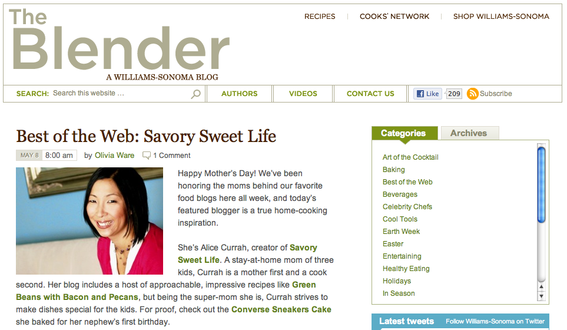Content intensive email newsletters can provide potential customers with real value, present an opportunity to build trust, encourage sharing, and drive direct site traffic.
In the old days of advertising and marketing, retailers would place ads in newspapers or magazines. The idea was that shoppers would read the articles in print and then see the ads, perhaps taking some action. Modern merchants have an opportunity to supplant — or at least coexist with — newspapers and printed magazines and become the content provider, giving customers valuable, industry or category specific articles that will — as mentioned above — engage them in a number of ways.
Great Newsletter Content Starts with a Blog
Email newsletters offer some of the best return on investment among direct marketing tactics. For example, a two-month old email newsletter campaign that I have been working on has grown to generate nearly 25 percent of site traffic.
The key to creating an email newsletter that drives traffic and builds report with customers is to have an excellent blog or article section on your store site that can provide fodder for the newsletter.
Articles in this section of your site should match the industry you serve and bring real value in terms of theme or topic, but never be a sales pitch. For example, here is a list of articles from the “Learn” section of the REI website.
- “Geocaching with Kids”
- “Casting an Artistic Eye on the Sky”
- “Using Your Bike to Run Errands”
- “Tips and a Handy Form for Inspecting Your Climbing Gear”
- “New Biogas Program Improves Lives in Nepal”
- “How to Choose a Family/Base Camping Tent”

REI’s “Expert Advice” section.
Although all of the REI articles are clearly connected with the products the site sells, none of these articles actually seek to sell products — remember you’re acting like the newspaper. Even the post “How to Choose a Family/Base Camping Tent” focuses on providing the reader with good general-purpose information.
Here are some additional examples of articles from Williams-Sonoma’s blog called Blender.
- “How to Grill the Perfect Steak”
- “How to Make the Perfect Margarita”
- “Whip up a Frittata”
- “Common Wine Myths Uncorked”

The Blender blog, from Williams-Sonoma.
With these articles, Williams-Sonoma is giving its customers real information about topics that interest them. In fact, Williams-Sonoma is positioning itself as a source of expert advice. So who do you think the shopper will buy from when it’s time to get a frittata pan, grill utensil, or margarita blender?
Get the Blog Content, Promote It via Email
Both REI and Williams-Sonoma have professional writers creating blog content. But all hope is not lost for small merchants. I suggest that most small ecommerce businesses approach the problem of article composition from one of two perspectives. Either there is an in-house resource (perhaps a solo-entrepreneur or marketing person) that has both the topical knowledge and the writing skills to produce the articles, but lacks time. Or there is not an in-house writer.
In the first case, it may make sense to try to offload or outsource other duties — say order fulfillment as one example — to devote time to writing good articles that in turn can equip a newsletter to drive site traffic. In the second scenario, it may make sense to hire freelance writers to produce the articles or invest in writing courses.
Find Additional Articles to Further Engage Customers
When it comes to content for the newsletter, not every article that is listed needs to come from your own site or your own writers. Rather, consider having as many as half of the articles listed in your newsletter link to other sources.
For example, if you were an online retailer that sold wedding gowns, it would have been acceptable to link to articles like “Kate’s Wedding Gown Tribute to Another Princess Bride,” from the Daily Mail in the U.K.
So how do you find articles to include? Here are three suggestions for finding article to include links to in your email newsletter.
- Follow industry leaders on Twitter. Whether you sell chainsaws or ball gowns, every industry has some pundit tweeting away. Follow the most influential tweeters. Often these individuals will lead you to interesting articles to include in your newsletter.
- Subscribe to RSS feeds. Pick new online publications or blogs that are in your industry and subscribe to their RSS feeds. When it is time to build your newsletter, review the feeds for worthwhile articles.
- Conduct a news search. Recently, I included an article about spring planting from the Old Farmer’s Almanac in a newsletter. That article generated a couple thousand click-throughs for the Almanac and garnered more than one positive email reply from customers.
Summing Up
Email newsletters that act like inbox newspapers and provide shoppers with valuable content can position your ecommerce business as an industry expert and trustworthy source.




